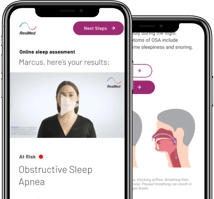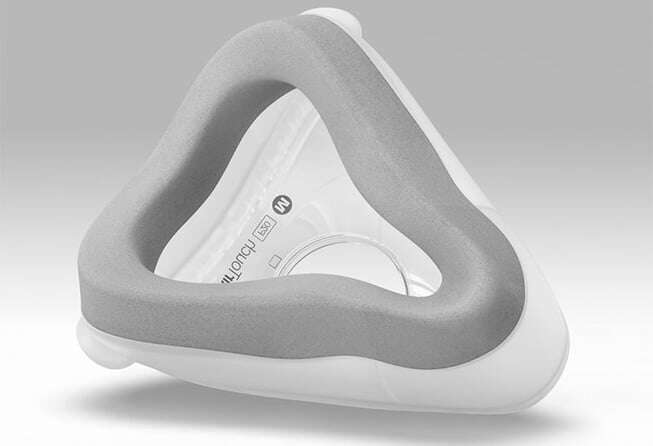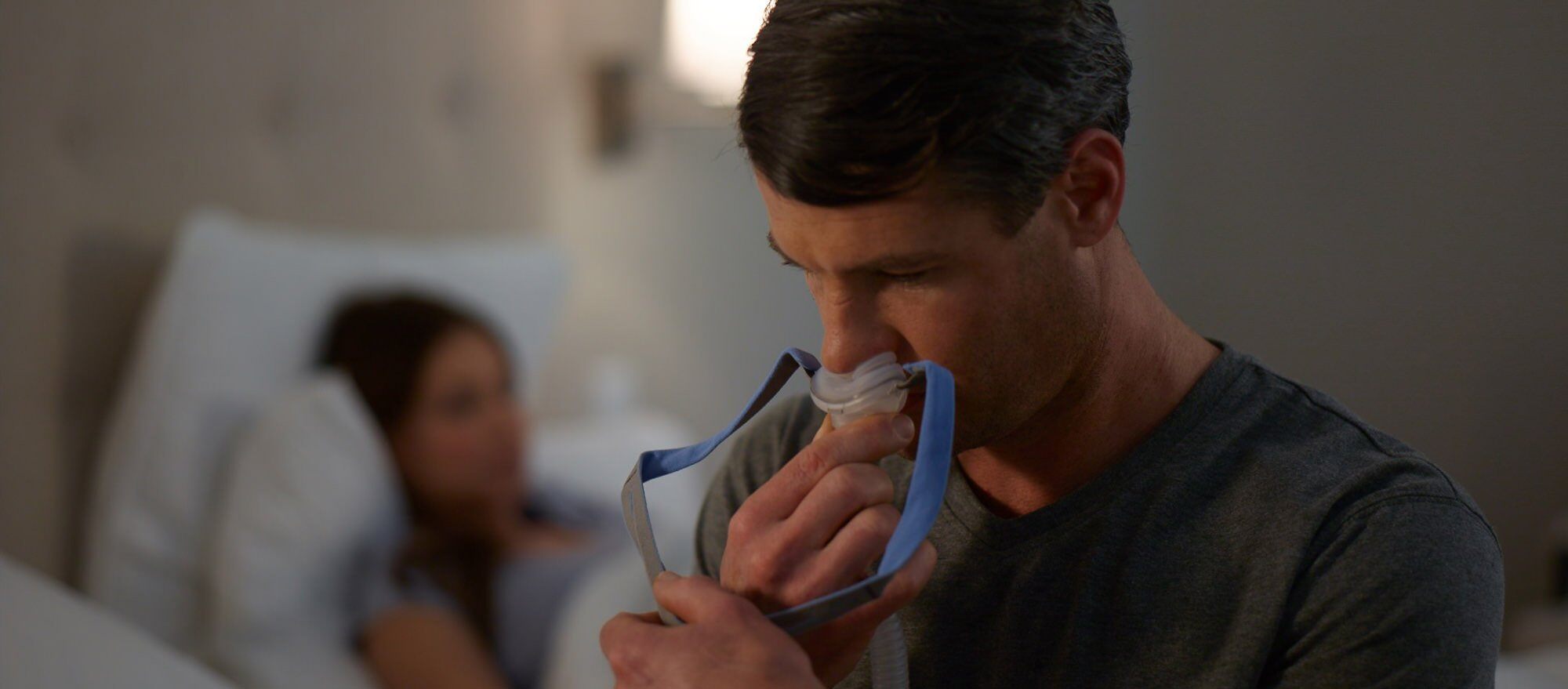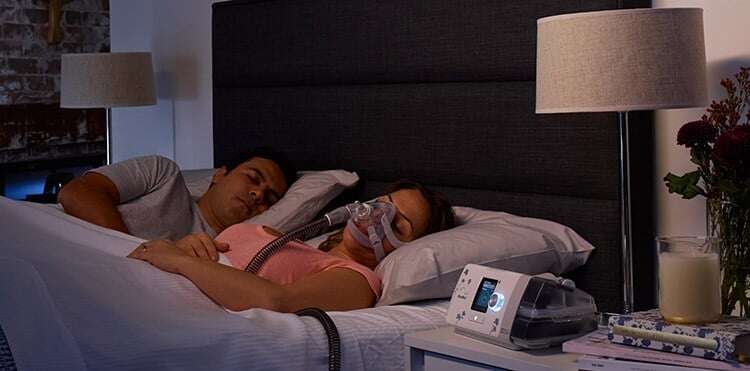Most effective medical treatments today have some form of side effects which may occur, and using a CPAP machine to treat sleep apnea is no different.
None of the main side effects are particularly serious, however given the serious health concerns that are linked with untreated sleep apnea, it’s worth addressing these side effects and effectively managing them, than foregoing your treatment.
If you use a CPAP (Continuous Positive Airway Pressure) machine as a part of your sleep apnea therapy, then it’s important to use it every night consistently and correctly.
While a CPAP Machine can offer relief from sleep apnea symptoms and a better night’s sleep, it’s not without its minor challenges too.
Here are the 10 main side-effects and how to address each.
1. My mask makes me feel claustrophobic
When it’s in use, your CPAP mask is strapped to your face, blowing streams of air through your mouth and into your airways to help keep your throat clear all night - so it’s completely understandable to feel a little discomfort, especially when in bed when you’re trying to relax.
It’s therefore not surprising that this is one of the most common concerns people have, even if CPAP is helping them sleep better.
Try this: Use an alternative mask
For some patients, the mask’s design and size can be a little intimidating, because it covers a lot of your face while being a little heavy. If this is happening to you, we recommend trying a different type of mask, known as a nasal pillow mask, which is smaller, lighter, quieter and ultimately less intrusive.
It fits directly into the base of your nose with pillow-type cushions which seal around your nostrils.
You can find more information about nasal pillow masks here.
Try this: Introduce in stages
Ease yourself into getting comfortable with the mask through gradual introduction and see if this lowers the claustrophobic feeling.
So, instead of immediately strapping it to your face and turning on the air- which can be quite intimidating- perhaps simply hold it to your face first and wait a few moments and increase your use from there.
You may also want to try napping with the headgear on for short periods too.
Try this: Wearing your mask while not asleep
Try wearing the headgear while performing daily tasks and chores such as cleaning, watching television or reading to get accustomed while distracted.
Try this: Ensure you are using a machine with Sleep Onset Detection function
Available now on some CPAP devices, the Sleep Onset Detection feature maximises convenience by waiting for you to fall asleep before administering your overnight therapy. The machine will begin at a low pressure and won’t ramp up to your prescribed pressure until the device detects that you have fallen asleep.
2. I can't get use to the sound of my machine
Some older CPAP machines may vibrate or hum when they’re on, which can be frustrating when you’re trying to find peace and quiet to get some rest.
Try this: Distance yourself
Try setting up the machine as far away from your bed as your hose will reach. Or even put it under your bed if that mutes the sound a little.
Try this: Upgrade your CPAP
Newer CPAP machines are much smaller and quieter, so you may consider upgrading to a model.
Try this: Block the noise
If you are still noticing the sound of your machine, consider wearing noise cancelling headphones and earplugs, or you could try using background music or white noise to counter the sound.
3. My mask doesn’t fit me well
Finding the perfect mask that fits your face well is important when using a CPAP machine for Sleep Apnea treatment. The correct shape for your face not only ensures your comfort, it also makes the mask work correctly.
Try this: Learn how to fit your mask
Your mask may not fit you correctly if you are not putting on the headgear in the right manner. Small adjustments can make all the difference to comfort and effectiveness, so ask your sleep professional to demonstrate the best way to put on your mask so that it fits perfectly to the contours of your face.
Try this: Find the right mask
Finding the right mask to fit you comfortably and correctly is worth the time. When you see your sleep professional, they are trained to undertake trial fittings for you to ensure that your mask works well for you.
For more masks, visit our masks page here.
Try this: Recognise facial changes over time
Your face naturally changes over time, through weight loss or gain, or even the growth of facial hair. If that happens, don’t just put up with the ill-fitting mask, as it can cause discomfort and issues with your treatment. Instead, exchange your mask for one that fits better.
4. I feel or hear air leaking
Hearing or feeling leaks from your CPAP mask or hose should never be ignored. Your CPAP machine works to overcome Sleep Apnea each night by using air pressure to keep your throat open throughout the hours of sleep and a leak is not only annoying- it can indicate a problem with your treatment.
Try this: Mask fitting
Ensuring your mask is fitting your face snuggly to create an air pressure seal. If you feel that there is a seepage of air, it’s time to check your mask.
Try this: Replacing your mask
Over time, some masks experience a normal wear and tear which can lead to a misshapen form or seal damage due to being in constant contact with skin oils, creams and even makeup. If this is the case, the integrity of the seal can become compromised which can also cause leaks. If this is the case, you may need to replace the old mask with a new one.
For more masks, visit our masks page here.
5. My mask is annoying me every time I use it
Frustration with the CPAP treatment is unfortunate but very normal, and you may find yourself becoming fed up having to put on the headgear nightly.
Try this: Mask fitting and positivity
Similar to the above, make sure you are using the best mask for you!
Focusing on the positive health benefits of your treatment over the inconvenience of the mask will help tip the scales in your mind of why you are doing this every night.
Just remember how much better you feel each day after a solid night’s sleep with the CPAP machine, versus how you were before the treatment.
Keep track of your sleep using our sleep diary
Recording your sleep in a diary each day helps you understand more about your sleep and you can start to identify what is affecting your sleep including any poor sleep habits you have.
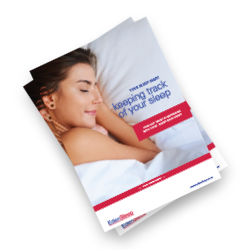
6. I feel bloated
There may be a time when you feel stomach bloating due to the air from the mask.
Try this: Adjust
Perhaps set your machine pressure slightly lower, use a flatter pillow or lie in a different position and see if you feel better.
7. The air pressure is uncomfortable
Getting accustomed to the continual air pressure being blown through the mask can be difficult because it doesn’t feel very natural. You may even find it difficult to exhale against the pressure itself.
Try this: Sleep Onset Detection function
Just as was mentioned above, some CPAP devices have a Sleep Onset Detection feature where the machine will begin at a low pressure and won’t ramp up to the pressure until the device detects that you have fallen asleep. This means that, while you are lying in bed with the headgear on, you won’t feel the full pressure of the air until after you have drifted off and no longer actively aware when the oxygen increases.
Try this: Auto-adjusting feature
Some CPAP devices have a sensor inbuilt to regulate the air pressure based on when you are inhaling and exhaling. It will then adjust the levels of oxygen to make the breathing experience far more comfortable and alleviate any problems you may have.
For an example of this, see the ResMed AirSense 10.
8. My nose is stuffy or dry
Some people experience nasal congestion or sinus issues, such as a dry or stuffy nose when exposed to the air pressure coming from the CPAP machine.
Try this: Heated humidifier
Most CPAP machines now come with a heated humidifier device inbuilt which is specifically designed to increase the moisture levels in the air being delivered, in order to reduce airway and nose dryness.
For more information, see our Humidifiers page.
9. The connecting tube is bothering me
Sometimes the tube behind can be inconvenient, tangle you up and get in the way during the night.
Try this: The CPAP Pillow
If you find that you are becoming frustrated by the presence of the tube attached to your mask, we recommend the CPAP Pillow. This is a uniquely designed pillow, specifically engineered for spinal support, and is quite effective for CPAP users. It features ribbed groves on both sides so that you can rest your head comfortably, while the tube sits away from you, and not across your pillow.
You can find more information here.
10. It’s hard to take a bathroom break
There’s always going to be times where you need to go to the toilet during the night, but then you remember you have your CPAP machine and feel trapped.
Try this: Disconnect your mask
Instead of undoing the mask and removing it from your face, which takes a lot of time and effort both taking it off and putting it back on, simply disconnect it from the machine. Then, when you get back to bed, you can reattach it and you’re done.
Sleep Apnea treatment
We hope that you are now feeling empowered about Sleep Apnea treatment and are ready to take your next step in restoring quality sleep to improve your health and well-being.
Heeding all of the advice and information will set you on the road to reclaiming your quality of life. But remember that it takes a while for most people to get comfortable with treatment.
How a Free Sleep Assessment can help you
If you are experiencing problems getting enough quality sleep and you believe it may be Sleep Apnea, you may wish to consider undertaking a free online sleep assessment to better understand how to improve your restful state and your overall health.
The assessment only takes 60 seconds and asks you a series of simple questions designed to help you uncover the cause, then conveniently sends the results to you via an email.
.webp?width=1158&height=143&name=Combined%20logo%20-%20Ecom%20Main%20300x200%20(1).webp)


